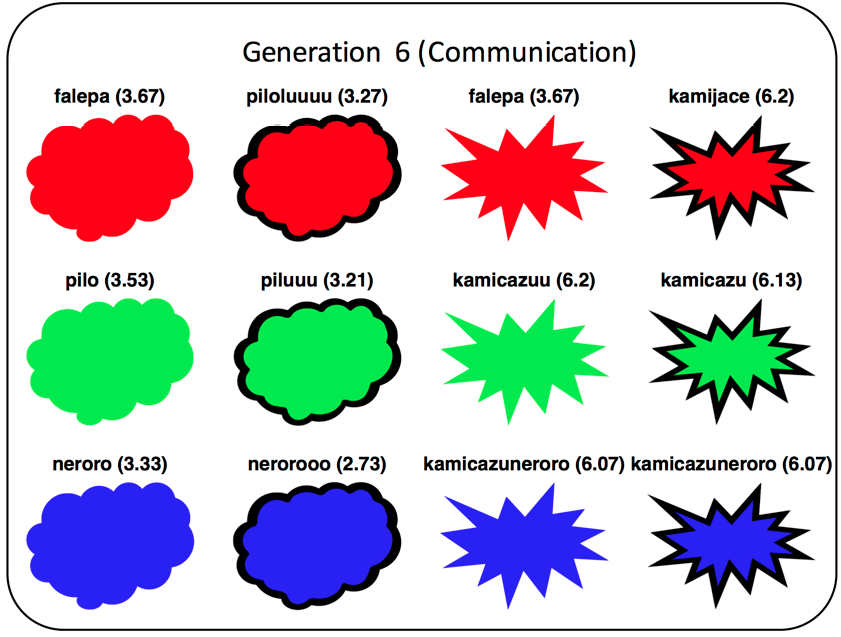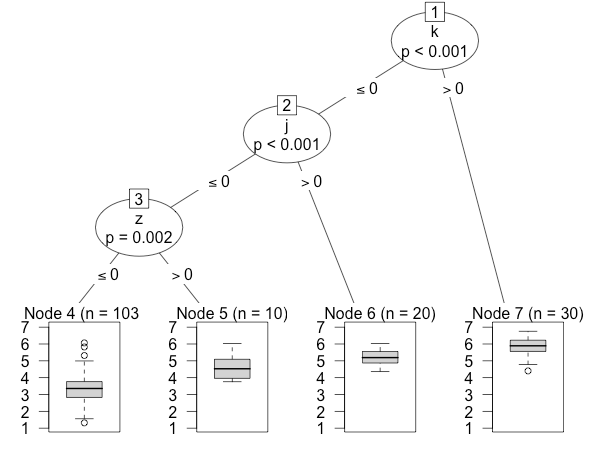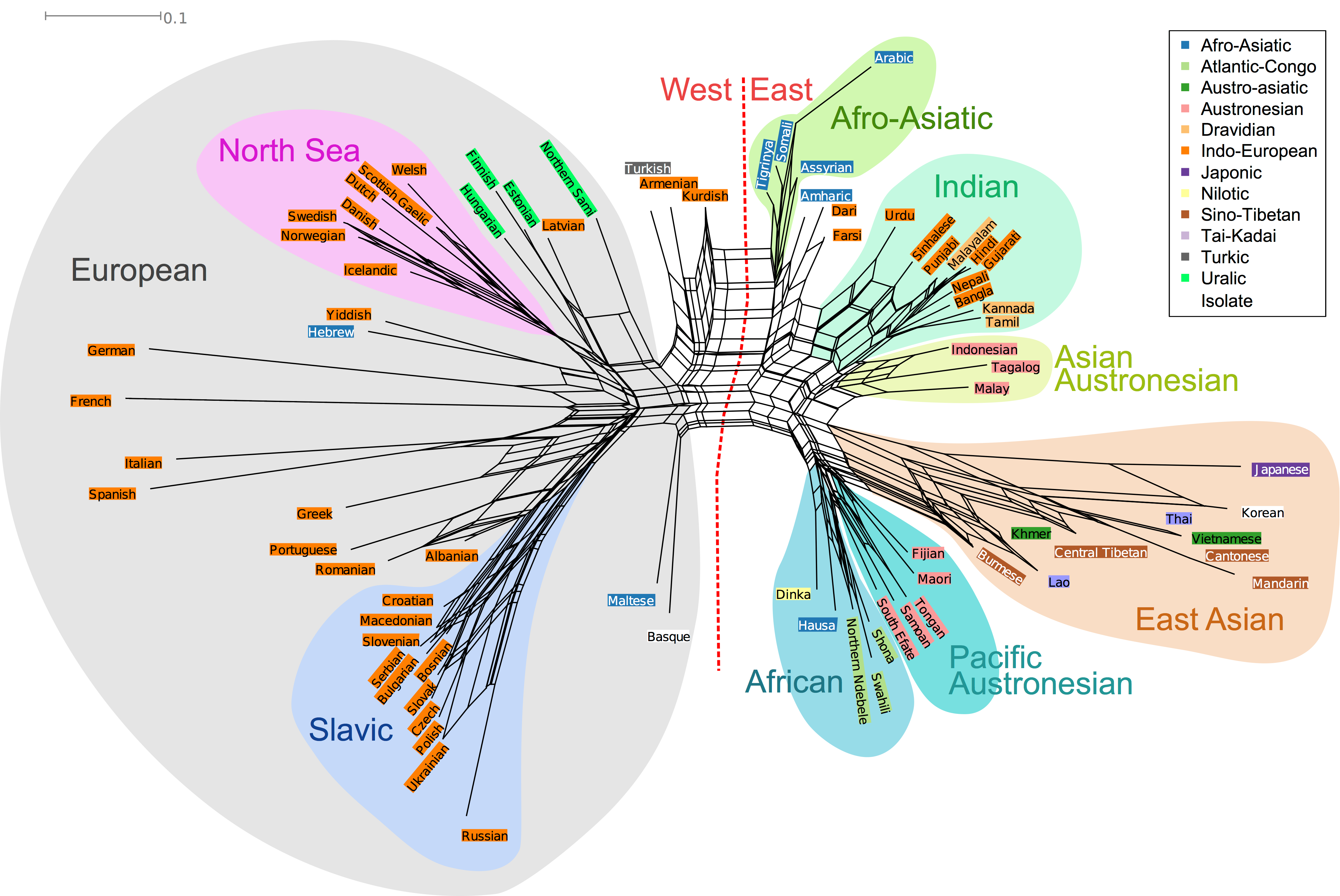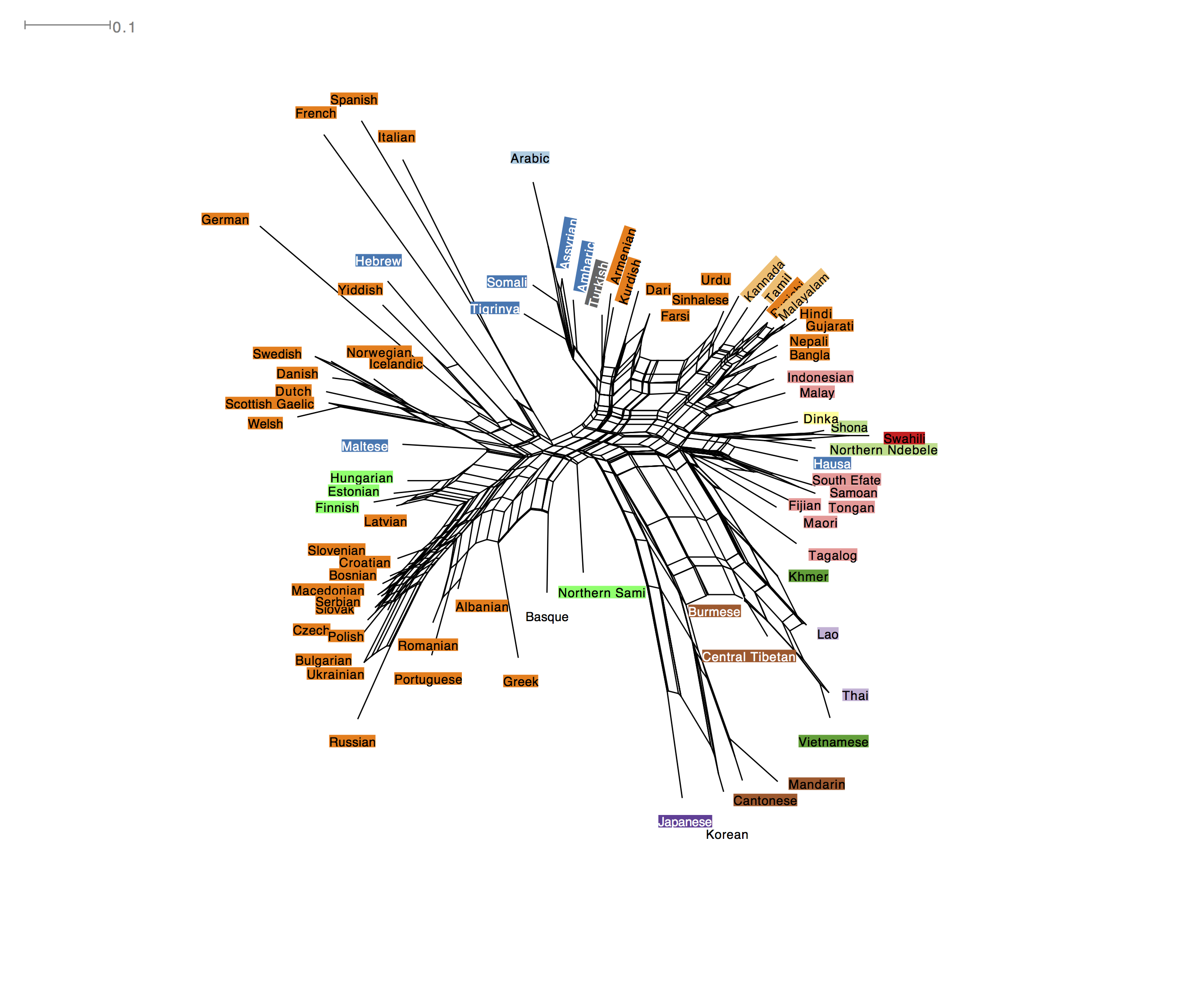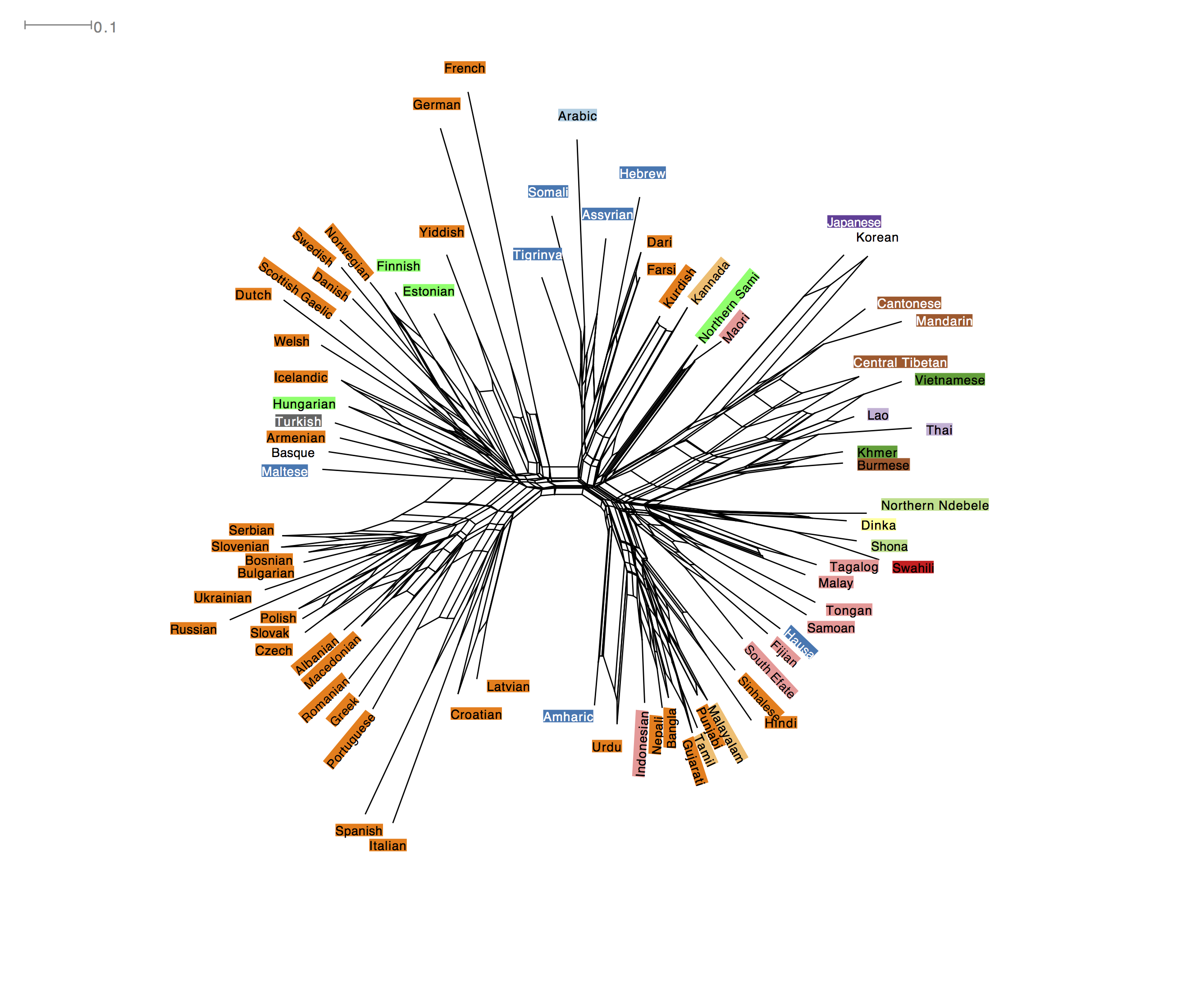It’s International Women’s day! Language Evolution is a largely male dominated discipline: women account for only 8 out of the top 100 most cited authors, and only 14 out of 82 invited speakers at the Evolution of Language Conference (see here). To promote the contribution of women to our field, we’ve compiled a list of 100 female researchers in language evolution.
The list is by no means exhaustive, and is largely based on attendance at the most recent EvoLang conference. Topics cover both language origins and evolutionary approaches to linguistics more generally. A recent paper by each author is also included, though it may not be the best representation of their work. All mistakes with regards to links and citations are my own.
Adele E. Goldberg
Goldberg, A. E. (2015). Subtle implicit language facts emerge from the functions of constructions. Frontiers in psychology, 6.
Alexandra Carstensen
Regier, T., Carstensen, A., & Kemp, C. (2016). Languages support efficient communication about the environment: words for snow revisited. PloS one, 11(4), e0151138.
Amy Bauernfeind
Bauernfeind AL, Soderblom EJ, Turner ME, Moseley MA, Ely JJ, Hof PR, Sherwood CC, Wray GA, Babbitt CC. Evolutionary divergence of gene and protein expression in the brains of humans and chimpanzees. Genome Biology and Evolution. doi: 10.1093/gbe/evv132
Amy Perfors
A Perfors (in press). On simplicity and emergence: Commentary on Johnson (2016) Psychonomic Bulletin and Review: Special issue on language evolution
Andrea Claude
Calude, A & Verkerk, A. (2016). How to build the Number Line in Indo-European – a Phylogenetic Study. Journal of Language Evolution [link]
Andreea Geambasu
Geambașu A., Ravigniani A. & Levelt C.C. (2016), Preliminary Experiments on Human Sensitivity to Rhythmic Structure in a Grammar with Recursive Self-Similarity, Frontiers in Neuroscience 10.
Anna Jon-And
Jon-And (2016) Modeling language change triggered by language shift. The Evolution of Language: Proceedings of the 11th International Conference (EVOLANG11)
Anna Maria Di Sciullo
Sciullo (2016) Emergent syntax and syntactic variation. The Evolution of Language: Proceedings of the 11th International Conference (EVOLANG11)
Anne Kandler
Kandler, A., Wilder, B., & Fortunato, L. (2017). Inferring individual-level processes from population-level patterns in cultural evolution. bioRxiv, 111575.
Annemarie Verkerk
Calude, A & Verkerk, A. (2016). How to build the Number Line in Indo-European – a Phylogenetic Study. Journal of Language Evolution [link]
Anu Vastenius
(2016) Constituent order in pictorial representations of events is influenced by language. The Evolution of Language: Proceedings of the 11th International Conference (EVOLANG11)
Ashley Micklos
Micklos (2016) Interaction for facilitating conventionalization: negotiating the silent gesture communication of noun-verb pairs. The Evolution of Language: Proceedings of the 11th International Conference (EVOLANG11)
Asifa Majid
Majid, A., Jordan, F., & Dunn, M. (2015). Semantic systems in closely related languages.
Brenda McCowan
Beisner, B. A., Hannibal, D. L., Finn, K. R., Fushing, H., & McCowan, B. (2016). Social power, conflict policing, and the role of subordination signals in rhesus macaque society. American journal of physical anthropology.
Bridget Samuels
Samuels, B. D. (2015). Can a bird brain do phonology?. Frontiers in psychology, 6.
Brigitte Pakendorf
Pakendorf, B. (2014). Coevolution of languages and genes. Current opinion in genetics & development, 29, 39-44.
Buddhamas Kriengwatana
Kriengwatana (2016) A general auditory bias for handling speaker variability in speech? evidence in humans and songbirds. . The Evolution of Language: Proceedings of the 11th International Conference (EVOLANG11)
Camilla Power
Power, C., Finnegan, M., & Callan, H. (2016). Human Origins: Contributions from Social Anthropology.
Carmen Saldana
(2016) The cultural evolution of complexity in linguistic structure. The Evolution of Language: Proceedings of the 11th International Conference (EVOLANG11)
Carol Padden
Padden, C., Meir, I., Aronoff, M. and Sandler, W. (in press) The grammar of space in two new sign languages. In D. Brentari (Ed.), Sign Languages: A Cambridge Survey. New York: Cambridge University Press.
Catherine Hobaiter
Hobaiter, C., Poisot, T., Zuberbühler, K., Hoppitt, W., & Gruber, T. (2014). Social network analysis shows direct evidence for social transmission of tool use in wild chimpanzees. PLoS Biol, 12(9), e1001960.
Catriona Silvey
Silvey, C., Kirby, S., & Smith, K. (2015). Word meanings evolve to selectively preserve distinctions on salient dimensions. Cognitive Science, 39(1), 212-226.
Cecilia Heyes
Heyes, C. (2016). Blackboxing: social learning strategies and cultural evolution. Phil. Trans. R. Soc. B, 371(1693), 20150369.
Chiara Barbieri
Barbieri, C., Güldemann, T., Naumann, C., Gerlach, L., Berthold, F., Nakagawa, H., … & Pakendorf, B. (2014). Unraveling the complex maternal history of Southern African Khoisan populations. American journal of physical anthropology, 153(3), 435-448.
Christina Behme
Behme, C. (2015). Is the ontology of biolinguistics coherent?. Language Sciences, 47, 32-42.
Christine Caldwell
Caldwell CA, Atkinson M & Renner E (2016) Experimental approaches to studying cumulative cultural evolution, Current Directions in Psychological Science, 25 (3), pp. 191-195.
Christine Cuskley
Cuskley, C., Simner, J. and Kirby, S. (2015). Phonological and orthographic influences in the bouba-kiki effect. Psychological Research, doi: 10.1007/s00426-015-0709-2.
Claire Bowern
Bowern, C. (2015). Linguistics: Evolution and Language Change. Current Biology, 25(1), R41-R43.
Colleen Reichmuth
Reichmuth, C., & Casey, C. (2014). Vocal learning in seals, sea lions, and walruses. Current opinion in neurobiology, 28, 66-71.
Cory Cuthbertson
(2016) Empirically assessing linguistic ability with stone tools. The Evolution of Language: Proceedings of the 11th International Conference (EVOLANG11)
Dean Falk
Falk, D. (2016). Evolution of Brain and Culture. Journal of Anthropological Sciences, 94, 1.
Deborah Kerr
(2016) The spontaneous emergence of linguistic diversity in an artificial language. The Evolution of Language: Proceedings of the 11th International Conference (EVOLANG11)
Dedre Gentner
Gentner, D. (2016). Language as cognitive tool kit: How language supports relational thought. American Psychologist, 71(8), 650.
Diane Reiss
Maust-Mohl, M., Soltis, J., & Reiss, D. (2015). Acoustic and behavioral repertoires of the hippopotamus (Hippopotamus amphibius). The Journal of the Acoustical Society of America, 138(2), 545-554.
Ekaterina Abramova
(2016) Triadic ontogenetic ritualization: an overlooked possibility. The Evolution of Language: Proceedings of the 11th International Conference (EVOLANG11)
Elizabeth Irvine
Irvine (2016) Deictic tools can limit the emergence of referential symbol systems. The Evolution of Language: Proceedings of the 11th International Conference (EVOLANG11)
Emilia Garcia-Casademont
Garcia-Casademont, E. (2017). A Case Study in the Emergence of Recursive Phrase Structure. In First Complex Systems Digital Campus World E-Conference 2015 (pp. 333-336). Springer, Cham.
Emily Morgan
(2016) Frequency-dependent regularization in iterated learning. The Evolution of Language: Proceedings of the 11th International Conference (EVOLANG11)
Erica Cartmill
Cartmill, E. A., Hunsicker, D., & Goldin-Meadow, S. (2014). Pointing and naming are not redundant: Children use gesture to modify nouns before they modify nouns in speech. Developmental psychology, 50(6), 1660.
Esther Clarke
Clarke, E., Reichard, U. H., & Zuberbühler, K. (2015). Context-specific close-range “hoo” calls in wild gibbons (Hylobates lar). BMC evolutionary biology, 15(1), 56.
Eva Zehentner
(2016) A game theoretic account of semantic subjectification in the cultural evolution of languages. The Evolution of Language: Proceedings of the 11th International Conference (EVOLANG11)
Evelina Fedorenko
Piantadosi, S. T., & Fedorenko, E. (2016). Infinitely productive language can arise from chance under communicative pressure.
Federica Cavicchio
Cavicchio (2016) Are emotional displays an evolutionary precursor to compositionality in language?. The Evolution of Language: Proceedings of the 11th International Conference (EVOLANG11)
Fiona Jordan
Jordan, FM & Huber, B, 2013, ‘Evolutionary approaches to cross-cultural anthropology’. Cross-Cultural Research, vol 47., pp. 91-101
Florencia Reali
Reali, F., Chater, N., & Christiansen, M. H. (2014, March). The paradox of linguistic complexity and community size. In Proceedings of the 10th International Conference on the Evolution of Language (EVOLANG X). Singapore: World Scientific Publishing Co. Pte. Ltd (pp. 270-279).
Francesca Tria
Tria (2016) Modeling the emergence of creole languages. The Evolution of Language: Proceedings of the 11th International Conference (EVOLANG11)
Gabriella Vigliocco
Vigliocco, G., Perniss, P., & Vinson, D. (2014). Language as a multimodal phenomenon: implications for language learning, processing and evolution.
Hannah Cornish
Cornish, H., Dale, R., Kirby, S., & Christiansen, M. H. (2017). Sequence Memory Constraints Give Rise to Language-Like Structure through Iterated Learning. PloS one, 12(1), e0168532.
Hannah Haynie
Haynie, H., Bowern, C., & LaPalombara, H. (2014). Sound symbolism in the languages of Australia. PloS one, 9(4), e92852.
Hannah Little
(2016) Emergence of signal structure: effects of duration constraints. The Evolution of Language: Proceedings of the 11th International Conference (EVOLANG11)
Heidi Lyn
Lyn, H. (2017). The question of capacity: Why enculturated and trained animals have much to tell us about the evolution of language. Psychonomic Bulletin & Review, 24(1), 85-90.
Hope Morgan
(2016) The effect of modality on signal space in natural languages. The Evolution of Language: Proceedings of the 11th International Conference (EVOLANG11)
Irene Pepperberg
Pepperberg, I. M. (2016). Animal language studies: What happened? Psychonomic Bulletin & Review Psychon Bull Rev. doi:10.3758/s13423-016-1101-y
Irit Meir
Meir, I., Aronoff, M., Börstell, C., Hwang, S. O., Ilkbasaran, D., Kastner, I., … & Sandler, W. (2017). The effect of being human and the basis of grammatical word order: Insights from novel communication systems and young sign languages. Cognition, 158, 189-207.
Janet Mann
Mann, J., & Singh, L. (2015). Culture, Diffusion, and Networks in Social Animals. Emerging Trends in the Social and Behavioral Sciences: An Interdisciplinary, Searchable, and Linkable Resource.
Jasmeen Kanwal
(2016) The evolution of Zipf’s law of abbreviation. The Evolution of Language: Proceedings of the 11th International Conference (EVOLANG11)
Jennifer Culbertson
Culbertson, J., & Newport, E. L. (2015). Harmonic biases in child learners: In support of language universals. Cognition, 139, 71-82.
Jesse Snedeker
Kocab, A., Senghas, A., & Snedeker, J. (2016). The emergence of temporal language in Nicaraguan Sign Language. Cognition, 156, 147-163.
Jiani Chen
Chen, J., & ten Cate, C. (2015). Zebra finches can use positional and transitional cues to distinguish vocal element strings. Behavioural processes, 117, 29-34.
Joan Bybee
Bybee, Joan. Language change. Cambridge University Press, 2015.
Joanna Bryson
Bryson, J.J. (2007). Embodiment vs. Memetics. Mind & Society, 7(1):77-94. [Link]
Kate Arnold
Arnold, K & Zuberbuehler, K 2013, ‘Female putty-nosed monkeys use experimentally altered contextual information to disambiguate the cause of male alarm calls’ PLoS One, vol 8, no. 6, e65660. DOI: 10.1371/journal.pone.0065660
Kathleen Dudzinski
Dudzinski, K., & Frohoff, T. (2014). Dolphin mysteries: Unlocking the secrets of communication. Yale University Press.
Katie Collier
(2016) Dwarf mongooses combine meaningful alarm calls. The Evolution of Language: Proceedings of the 11th International Conference (EVOLANG11)
Katie Slocombe
Fedurek, P., & Slocombe, K. E. (2011). Primate vocal communication: a useful tool for understanding human speech and language evolution?. Human Biology, 83(2), 153-173.
Kim Bard
Bard, K. A. (2016). Dyadic interactions, attachment and the presence of triadic interactions in chimpanzees and humans. Infant Behavior and Development.
Kirsty Graham
(2016) Intentional meaning of bonobo gestures. The Evolution of Language: Proceedings of the 11th International Conference (EVOLANG11)
Lilia Rissman
Rissman (2016) Strategies in gesture and sign for demoting an agent: effects of language community and input . The Evolution of Language: Proceedings of the 11th International Conference (EVOLANG11)
Ljiljana Progovac
Progovac, L. (2016) A gradualist scenario for language evolution: Precise linguistic reconstruction of early human (and Neandertal) grammars. Frontiers in Psychology 2016
Limor Raviv
Raviv, L., & Arnon, I. (2016). Language evolution in the lab: The case of child learners. In A. Papagrafou, D. Grodner, D. Mirman, & J. Trueswell (Eds.), Proceedings of the 38th Annual Meeting of the Cognitive Science Society (CogSci 2016). Austin, TX: Cognitive Science Society (pp. 1643-1648). Austin, TX: Cognitive Science Society.
Lynn Perry
Perry (2016) Early learned words are more iconic. The Evolution of Language: Proceedings of the 11th International Conference (EVOLANG11)
Madza Farias-Virgens
(2016) Evolution of convergent transcriptional specializations in the brains of humans and song-learning birds. The Evolution of Language: Proceedings of the 11th International Conference (EVOLANG11)
Maggie Tallerman
Tallerman M. Can the integration hypothesis account for language evolution?. Journal of Neurolinguistics 2016, (ePub ahead of Print).
Marie Montant
Montant (2016) Make new with old: human language in phylogenetically ancient brain regions. The Evolution of Language: Proceedings of the 11th International Conference (EVOLANG11)
Marieke Schouwstra
Schouwstra, M. (2016). Temporal Structure in Emerging Language: From Natural Data to Silent Gesture. Cognitive Science.
Marieke Woensdregt
(2016) The cultural co-evolution of language and mindreading. The Evolution of Language: Proceedings of the 11th International Conference (EVOLANG11)
Marlen Fröhlich
Fröhlich, M.; Müller, G.; Zeiträg, C.; Wittig, R. M.; Pika, S.: Gestural development of chimpanzees in the wild: the impact of interactional experience. Animal Behaviour (2017)
Megan Broadway
(2016) Signature whistles in an introduction context. The Evolution of Language: Proceedings of the 11th International Conference (EVOLANG11)
Michelle Spierings
(2016) Rule learning in birds: zebra finches generalize by positional similarities, budgerigars by the structural rules.. The Evolution of Language: Proceedings of the 11th International Conference (EVOLANG11)
Molly Flaherty
Flaherty (2016) Do lab attested biases predict the structure of a new natural language? The Evolution of Language: Proceedings of the 11th International Conference (EVOLANG11)
Molly Lewis
Lewis, M. & Frank, M. C. (2016). The length of words reflects their conceptual complexity. Cognition. 153, 182-195.
Monica Tamariz
Tamariz, M., & Kirby, S. (2016). The cultural evolution of language. Current Opinion in Psychology, 8, 37-43.
Monika Pleyer
Pleyer, M. & Pleyer, M. (2016). The Evolution of Im/politeness. The Evolution of Language: Proceedings of the 11th International Conference (EVOLANG11)
Mutsumi Imai
Imai, M., Kanero, J., & Masuda, T.(2016). The Relation between Language, Culture and Thought. Current Opinion in Psychology, 8, 70–77.
Natalie Sebanz
Milward, S. J., & Sebanz, N. (2016). Mechanisms and development of self–other distinction in dyads and groups. Phil. Trans. R. Soc. B, 371(1686), 20150076.
Nicky Clayton
Clayton, N. S. (2015). Ways of thinking: from crows to children and back again. The Quarterly Journal of Experimental Psychology, 68(2), 209-241.
Oksana Tkachman
(2016) Arbitrariness of iconicity: the sources (and forces) of (dis)similarities in iconic representations . The Evolution of Language: Proceedings of the 11th International Conference (EVOLANG11)
Olga Feher
Fehér, O., Ljubicic, I., Suzuki, K., Okanoya, K. & Tchernichovski, O. (2017). Statistical learning in songbirds: from self-tutoring to song culture. Philosophical Transactions of the Royal Society B. doi: 10.1098/rstb.2016.0053.
Olga Vasileva
(2016) Language evolution in ontogeny and phylogeny. The Evolution of Language: Proceedings of the 11th International Conference (EVOLANG11)
Pamela Perniss
Perniss, P., & Vigliocco, G. (2014). The bridge of iconicity: from a world of experience to the experience of language. Phil. Trans. R. Soc. B, 369(1651), 20130300.
Piera Filippi
Filippi (2016) Humans recognize vocal expressions of emotional states universally across species. The Evolution of Language: Proceedings of the 11th International Conference (EVOLANG11)
Rebecca Grollemund
Grollemund, R., Branford, B., Bostoen, K., Meade, A., Venditti, C. & Pagel, M. (2015). Bantu expansion shows habitat alters the route and pace of human dispersals. Proceedings of the National Academy of Sciences (PNAS), 112:43, pp. 13296-13301. [link]
Rie Asano
(2016) On a music-ready brain: neural basis, mechanisms, and their contribution to the language evolution. The Evolution of Language: Proceedings of the 11th International Conference (EVOLANG11)
Rose Stamp
Stamp (2016) The grammar of the body and the emergence of complexity in sign languages. The Evolution of Language: Proceedings of the 11th International Conference (EVOLANG11)
Ruth Sonnweber
Sonnweber, R., Ravignani, A., & Fitch, W. T. (2015). Non-adjacent visual dependency learning in chimpanzees. Animal cognition, 18(3), 733-745.
Sabine van der Ham
(2016) Catergory learning in audition, touch, and vision. The Evolution of Language: Proceedings of the 11th International Conference (EVOLANG11)
Sabrina Engesser
(2016) Meaningful call combinations and compositional processing in a social bird. The Evolution of Language: Proceedings of the 11th International Conference (EVOLANG11)
Sarah Hrdy
Hrdy, S. B. (2016). Development plus social selection in the emergence of “emotionally modern” humans. Childhood: Origins, Evolution, and Implications, 11.
Sharon Thompson-Schill
Fedorenko, E., & Thompson-Schill, S. L. (2014). Reworking the language network. Trends in cognitive sciences, 18(3), 120-126.
Shiri Lev-Ari
Lev-Ari, S., & Peperkamp, S. (2017). Language for $200: Success in the environment influences grammatical alignment. Journal of Language Evolution. Advance online publication. doi:10.1093/jole/lzw012
Simone Pika
Fröhlich, M.; Müller, G.; Zeiträg, C.; Wittig, R. M.; Pika, S.: Gestural development of chimpanzees in the wild: the impact of interactional experience. Animal Behaviour (2017)
Sonia Harmand
Lewis, Jason E., and Sonia Harmand. “An earlier origin for stone tool making: implications for cognitive evolution and the transition to Homo.” Phil. Trans. R. Soc. B 371.1698 (2016): 20150233.
Sonja Vernes
Vernes, S. C. (2016). What bats have to say about speech and language. Psychonomic Bulletin & Review. Advance online publication. doi:10.3758/s13423-016-1060-3
Susan Goldin-Meadow
Goldin-Meadow, S., & Yang, C. (2016). Statistical evidence that a child can create a combinatorial linguistic system without external linguistic input: Implications for language evolution. Neuroscience & Biobehavioral Reviews.
Tessa Verhoef
Verhoef (2016) Iconicity, naturalness and systematicity in the emergence of sign language structure. The Evolution of Language: Proceedings of the 11th International Conference (EVOLANG11)
Vanessa Ferdinand
Ferdinand (2016) Word learners regularize synonyms and homonyms similarly. The Evolution of Language: Proceedings of the 11th International Conference (EVOLANG11)
Vera Kempe
Kempe, V., Gauvrit, N., & Forsyth, D. (2015). Structure emerges faster during cultural transmission in children than in adults. Cognition, 136, 247-254.
Wendy Sandler
Sandler, Wendy (to appear). What Comes First in Language Emergence? In N. Enfield (Ed.). Dependencies in Language: On the Casual Ontology of Linguistic Systems. Language Science Press, Studies in Diversity Linguistics Series.
Yasamin Motamedi
(2016) Linguistic structure emerges in the cultural evolution of artificial sign languages. The Evolution of Language: Proceedings of the 11th International Conference (EVOLANG11)
Zanna Clay
Clay (2016) Functionally flexible vocalizations in wild bonobos (pan pansicus). The Evolution of Language: Proceedings of the 11th International Conference (EVOLANG11)


